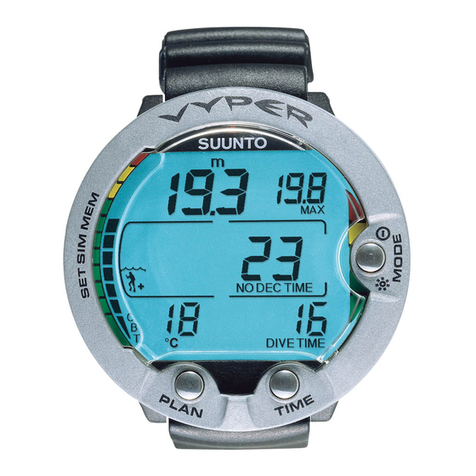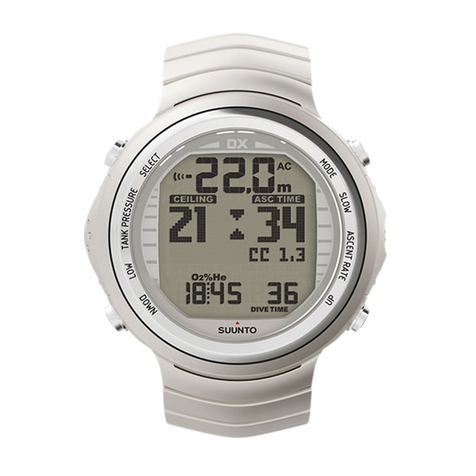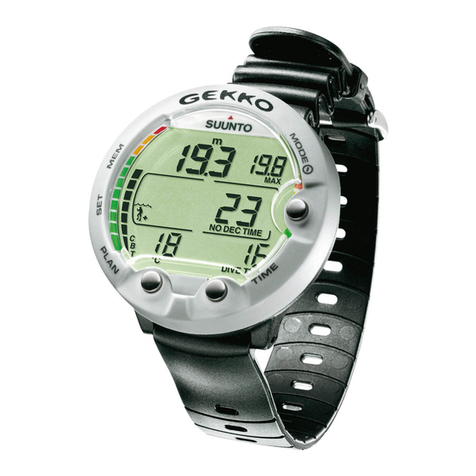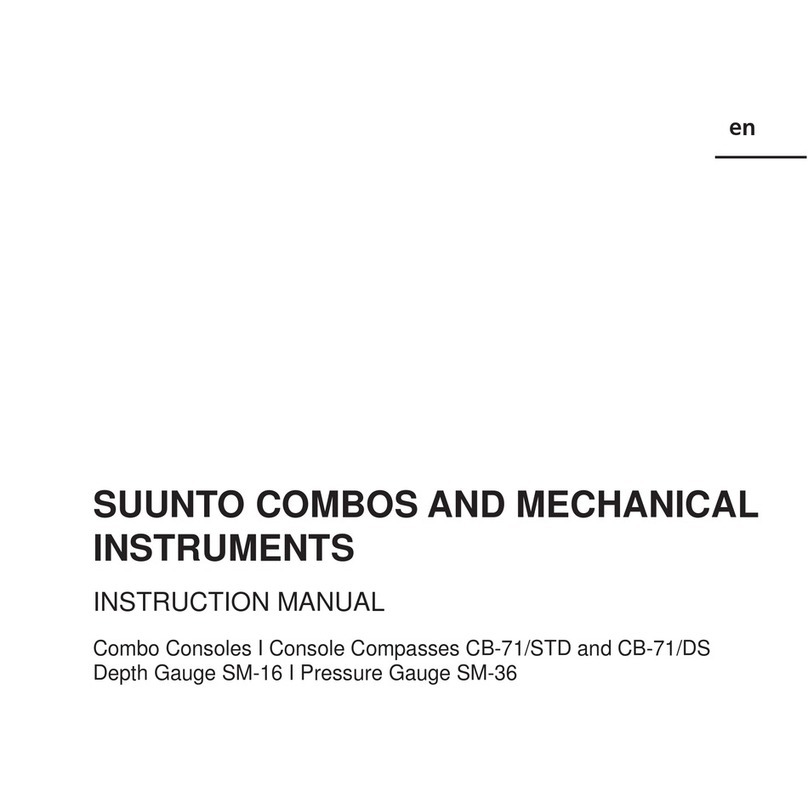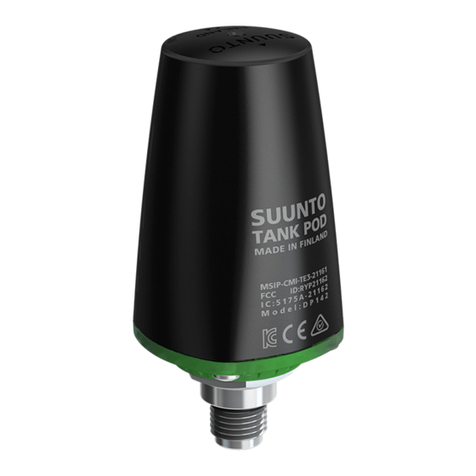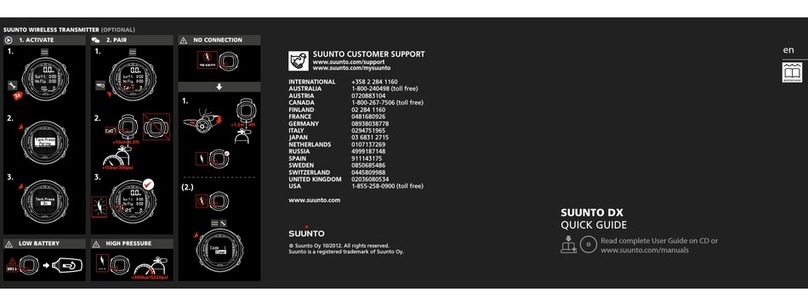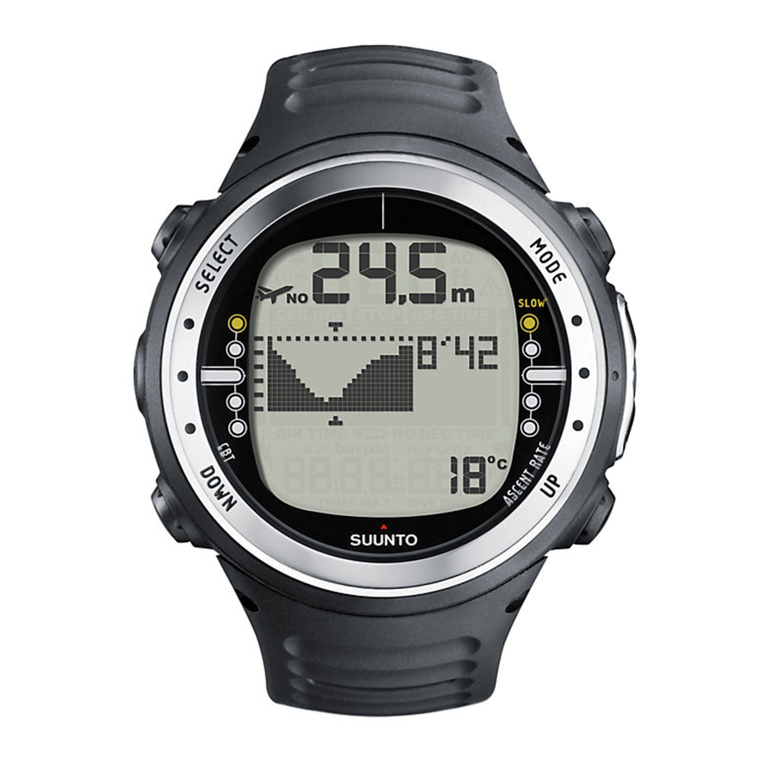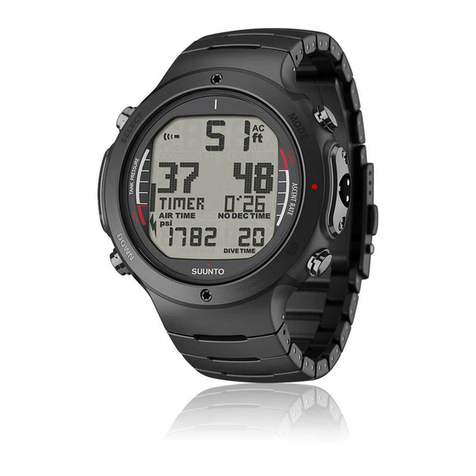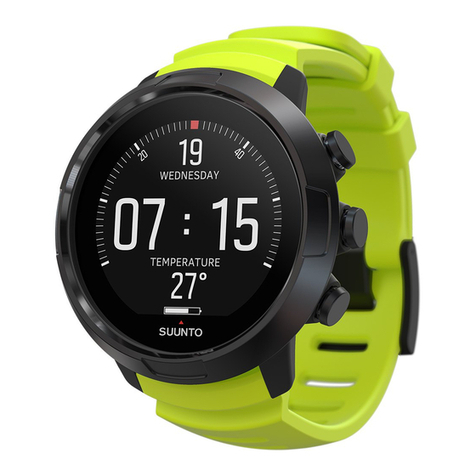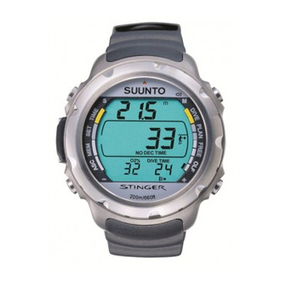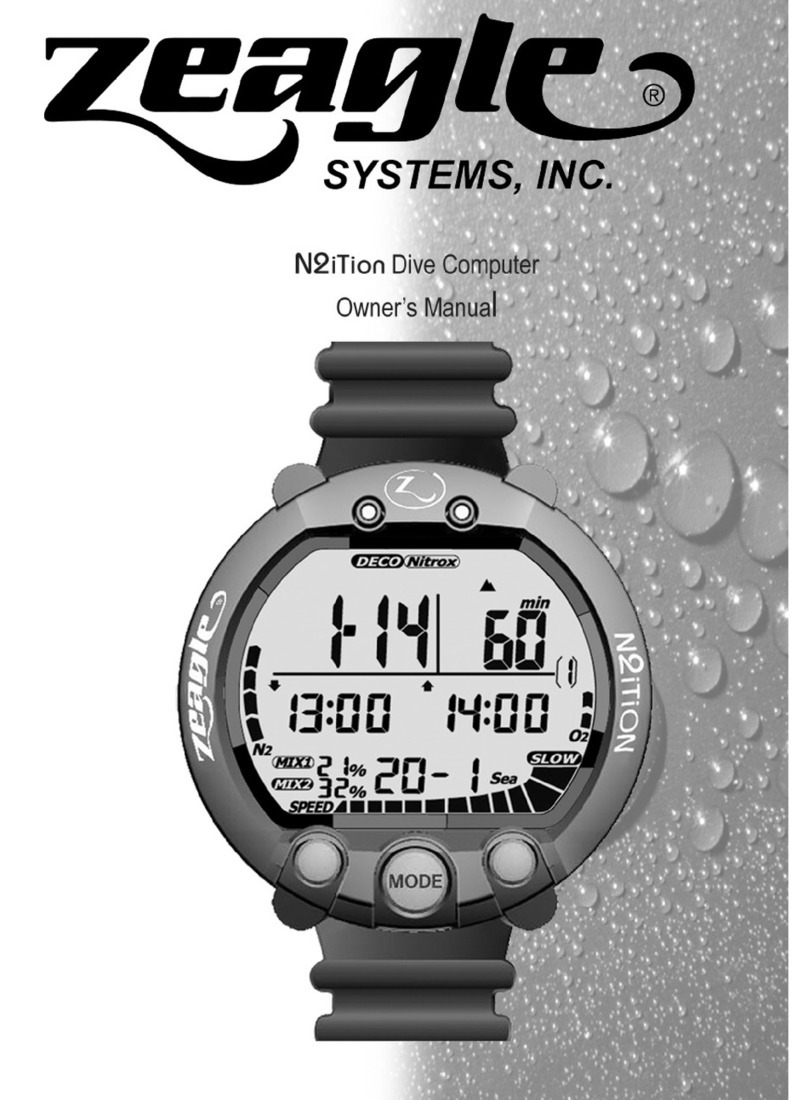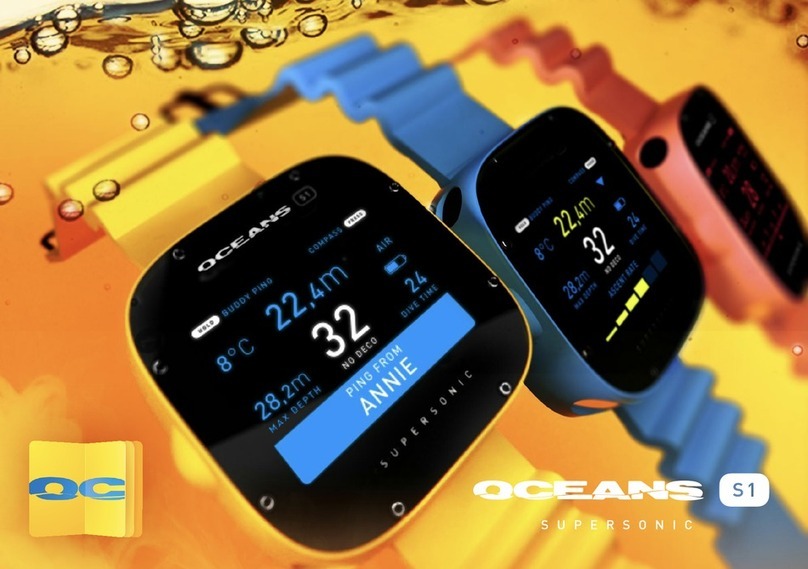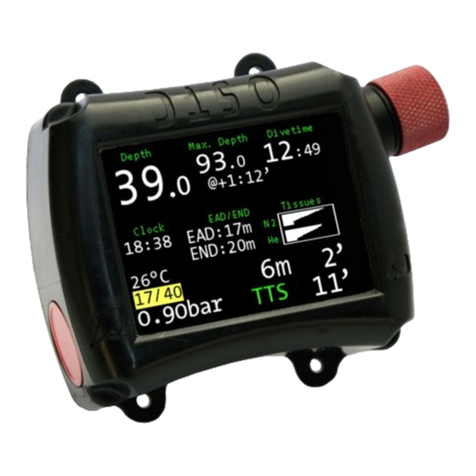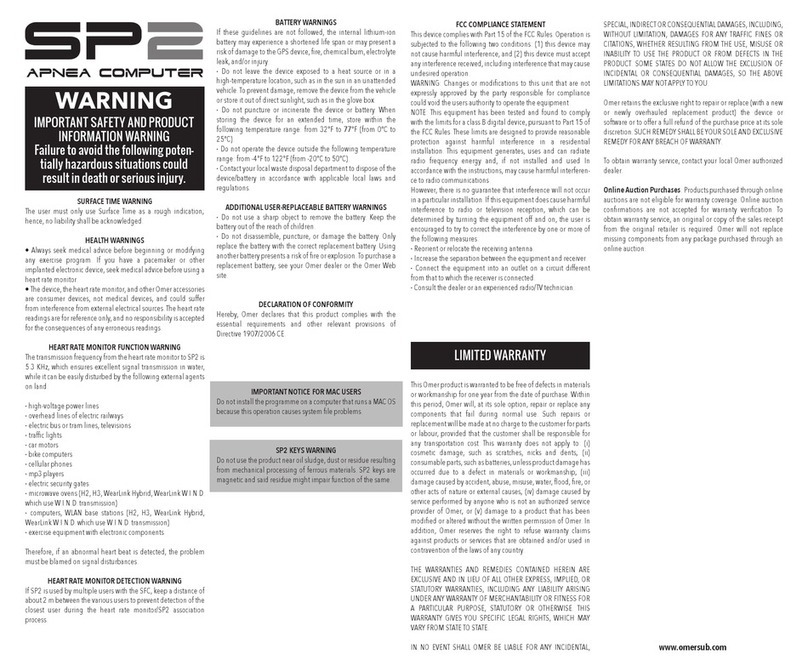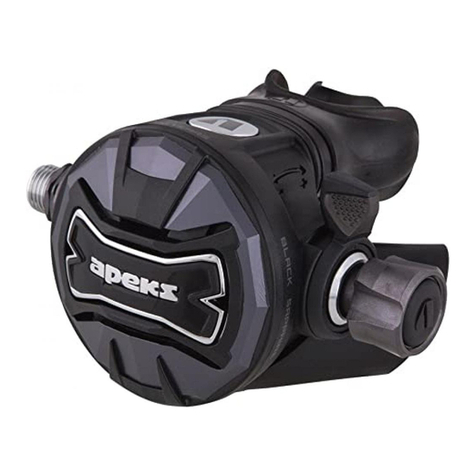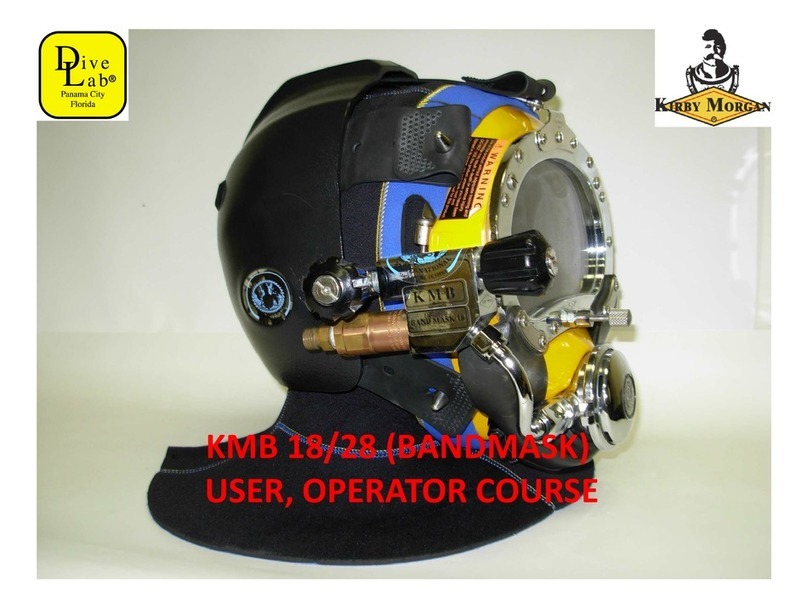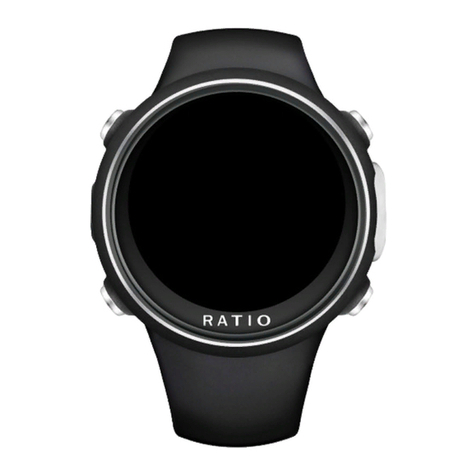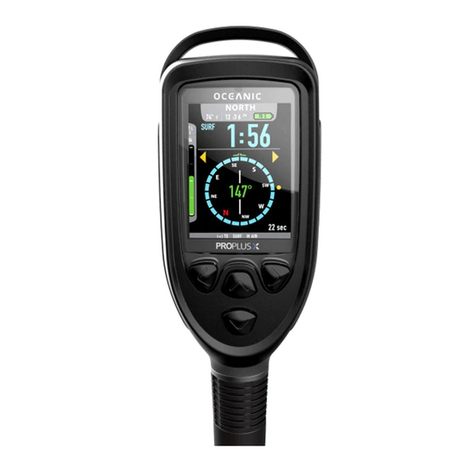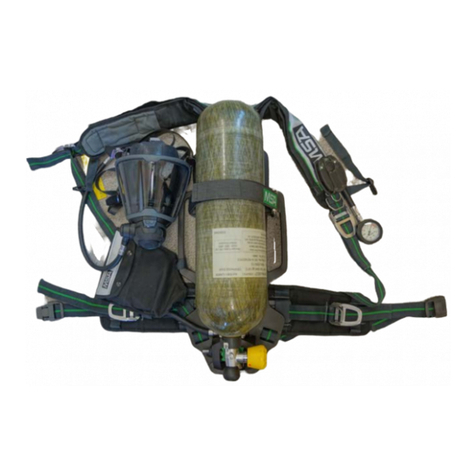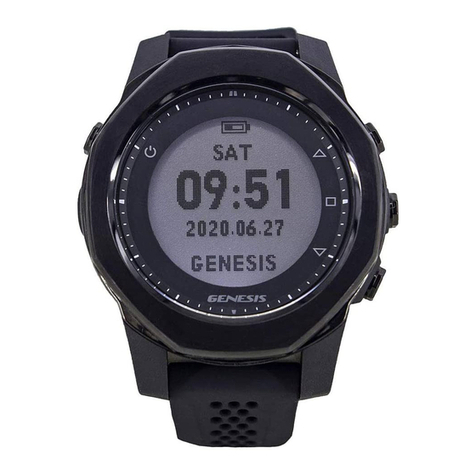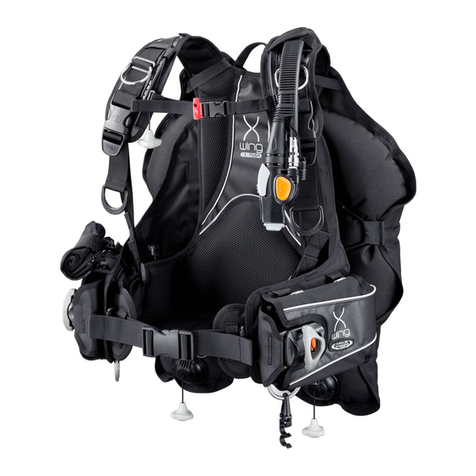6
3.2.3 During the Freedive...........................................................25
3.2.4 Freediving Day History.....................................................26
3.2.5 Surface interval after a Freedive .... ...................................27
3.3. GAUGE DIVING ................................................................................ 28
3.3.1. Maximum Operating Depth Planner [MOD] ...................... 2 8
3.3.2. Presetting the Displays in the Gauge Mode ......................... 29
3.3.3. Basic Dive Data ....................................................................... 3 0
3.3.4. Ascent Rate Indicator ............................................................. 3 1
3.3.5. Surface Interval After a Gauge dive ...................................... 32
3.3.6. Dive Numbering ...................................................................... 33
3.3.7. Flying After Diving ................................................................. 3 4
3.4. AUDIBLE AND VISUAL ALARMS ................................................ 35
4. SETTING MODE [SET] .......................................................................... 3 7
4.1. SETTING TIME, DATE AND DUAL TIME [TIME ] ............... 3 7
4.2. DAILY ALARM SETTING [ALM] ................................................ 39
4.3. TIMER SETTINGS [TIMER D] ..................................................... 4 1
4.4. DIVE MODE SETTINGS [DIVE] ................................................... 42
4.4.1. Set Gauge Mode ....................................................................... 42
4.4.2. Set Free Mode .......................................................................... 4 4
4.5. DIVE ALARM SETTINGS [DIVE AL] .......................................... 45
4.6. UNIT ADJUSTMENT SETTINGS[AdJ] ........................................ 4 7
5. MEMORY AND DATA TRANSFER [MEM] ........................................ 48
5.1. LOGBOOK AND DIVE PROFILE MEMORY [LOG] .................. 49
5.2. DIVE HISTORY MEMORY [HIS] .................................................. 53
5.3. DATA TRANSFER AND PC-INTERFACE [TR-PC] ................... 55
SuuntoD3.p65 31.1.2002, 14:166
